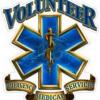Hi All,
First, please note there is a parallel, partially overlapping OP to this one here -
http://www.ifsqn.com...ning-of-drains/
The above contains help with a lot of the queries in this thread.
Now, A few thoughts from the "Gurus" on some of the diverse items in this thread -
gfdoucette07,
Could you tell me what chemicals you use for drain sanitation? Our sales rep wants us to use drain rings, which are convenient, but not cost effective at all. We are a small facility with only 6 drains in the production areas - so manually cleaning would not take up too much time. Any information would be so greatly appreciated :)
(1) See the thread linked above.
(2) For a deli/FSIS -
Use products formulated with antimicrobial agents (e.g., acetic acid, sodium diacetate, lactic acid, citric acid) when possible, to eliminate or prevent the growth of Lm in RTE products. In some cases, the addition of antimicrobial agents may not be possible because of the adverse effect on the flavor of the products. Retailers can read the ingredients statements on the labels to see whether the products in the deli have
antimicrobial agents and can contact their suppliers to determine whether products formulated with antimicrobial agents are available.
And a lot more –
 FSIS, control L.mono(Lm) in Retail Delicatessens,2015.pdf 319.75KB
138 downloads
FSIS, control L.mono(Lm) in Retail Delicatessens,2015.pdf 319.75KB
138 downloads
---------------------------------------------------
For Sampling/FSIS
Sample Collection Considerations
Establishments should design their sampling programs so that they collect a combination of random and
discretionary samples. Initially, samples should be collected at random, to ensure that all FCS have an
equal probability of being sampled. Random sampling should be used after an establishment has started
production or begins processing a new product to verify that their system is effective. The establishment should have plans in place so that all FCS will be sampled over a specified period of time.
Once the establishment has generated data demonstrating that their control system is effective,
the establishment should adopt a more risk-based sampling program. The risk-based
sampling should include discretionary samples that are collected along with the random
samples. These samples can be collected at the discretion of the sample collector based on
positive results or other conditions at observed at the establishment. For example, if the
establishment is collecting 3-5 samples per line as part of the routine sampling program, 1-2 of
the samples should be discretionary while the others should be collected randomly.
Discretionary samples should be collected if the sample collector observes conditions that could
lead to harborage or cross contamination in the post-processing environment (e.g., backed-up
drains, sanitation issues, and condensation dripping over equipment). Establishments should
also sample more frequently in areas where sanitation issues have been identified, and use the
results of their sanitation monitoring testing (e.g., APC or bioluminescence) to identify sampling
sites. Discretionary samples can also be collected to demonstrate the effectiveness of the
establishment’s corrective actions. The results from the discretionary samples can be linked to
the sample collector’s observations, providing more information about sources of harborage or
cross contamination in the establishment.
And a lot/lot more -
 FSIS Listeria Guideline,Chapter 3 of 4, 2012.pdf 221.88KB
144 downloads
FSIS Listeria Guideline,Chapter 3 of 4, 2012.pdf 221.88KB
144 downloads
--------------------------------------------------------
From 1st reference -
This guidance (2015) provides practical recommendations that retailers can use to control Lm
contamination and outgrowth in the deli area based on the findings of the Interagency Retail Lm
Risk Assessment, available scientific knowledge, the 2013 FDA Food Code, as well as lessons
learned from controlling Lm in meat and poultry processing establishments. Retailers can use
this best-practices guidance to help ensure that RTE meat and poultry products in the deli area
are handled under sanitary conditions and are not adulterated as defined in the FMIA and PPIA.
While these practices are designed to control Lm specifically, they also may help control other
food borne pathogens that may be introduced into the retail deli environment and other facilities
where consumers take possession of food.
The best practices are divided into four sections: (1) product and product handling, (2) cleaning
and sanitizing, (3) facility and equipment controls, and (4) employee practices. Practices
identified by the risk assessment that can significantly decrease the predicted risk of foodborne
illness are highlighted in each section. The other practices that are based on scientific
knowledge or lessons learned also will help retailers increase Listeria control in the deli area.
For example, although floors and drains were not considered as a source of cross-
contamination according to the Interagency Retail Lm Risk Assessment, FSIS data has shown
that floors, drains, and items like floor mats tend to be harborage points in FSIS establishments.
Providing this information can assist retailers in controlling Lm in the deli area. A self-
assessment tool, starting on page 14 of this guidance, is provided for deli operators to help
them identify the best practices they are using and to assess whether they need to adopt others.
By following the best practices in the guidance and the 2013 FDA Food Code, retailers can help
ensure that RTE products are not adulterated with Lm, and that the potential for listeriosis is
decreased.
---------------------------------
Designing the Routine Monitoring Program
The objective of the routine monitoring program is to detect niches in order to initiate corrective
actions before L. monocytogenes can contaminate product contact surfaces (PCS) or product.
The routine monitoring program will typically focus on surfaces in the processing area(s) where
at-risk product is exposed to the environment. Sampling locations are typically designated into
zones based on the proximity to the food (Table 1). The number of samples collected will differ
by zone, the risk to exposed product and the complexity of the production system. The majority
of the sampling locations are typically focused in Zones 2 and 3 to obtain early indication of
Listeria spp. presence in harborage sites or transfer points.
In order to make the best use of resources and collect relevant data, it is important that processors perform their own facility specific evaluation to determine the selection of number of samples and frequency of sample collection in each of the zones. Recommendations for sample numbers and frequency exist in other guidance, for example the USDA FSIS Listeria Guidance (11).
For at-risk products, it is recommended that facilities consider including Zone 1 testing in their
LEMP program. In order to make this decision the facility should assess whether there is a risk
of harborage of Listeria on PCS and whether information from other verification activities
questions the hygienic status of a processing line or an increased potential for cross
contamination of the line. Zone 1 sampling should be representative of all product contact
surfaces on that line. The number of samples to take would be determined by the size and
complexity of the line. Under most conditions Zone 1 testing for Listeria spp. can be
implemented without the need for holding finished product (see section on Investigation and
Corrective Actions). This allows facilities to more aggressively test for the indicator while
minimizing disruption to production.
Typically Zone 4 monitoring is conducted less frequently or for investigational purposes. The
sampling locations typically include surfaces outside the production areas in order to determine
if there is a potential for Listeria spp. to be present in the non-production areas. Sampling non-
production and raw areas may also help to assess the effectiveness of preventive controls
between production areas with different level of risks (e.g., hallway between raw and or at-risk
product areas).
In most circumstances a LEMP should not extend into raw processing areas (e.g., ingredients,
raw meat and fish, and unpasteurized dairy products) as it is assumed these areas are likely
contaminated. Some facilities may not have truly defined raw and RTE areas, in this case the all
production room with exposed at-risk may be included (e.g. fresh cut produce, salad assembly).
In the risk evaluation, thorough consideration should be given to the process flow and nature and
intended use of the product. The sampling of interfaces, transition areas or barriers between raw
areas and at-risk product areas is recommended to verify the effectiveness of preventive controls
at maintaining separation. Some examples include the curing area in raw milk cheese production
or a the floor in front of a single door oven
Refer to Table 1 for examples of surfaces to include in a plant program.
 Zoning.png 168.17KB
1 downloads
Zoning.png 168.17KB
1 downloads
The food safety team (e.g., a cross-functional team with technical knowledge of the plant’s
programs, processes and practices) may develop a list of sites that could be sampled in rotation
and be completely covered in a given timeframe, for example, monthly or quarterly. The trained
technician taking the samples should also have the freedom to sample additional sites. As
mentioned earlier, the sites should be selected based on the potential to harbor Listeria spp.
Examples of sites and potential sources of Listeria spp. are provided in Table 3.
Routine sampling should be performed during production. It is recommended that sampling of
Zones 1-3 take place at a minimum of three hours after the beginning of production, and should
be varied to cover times and shifts across the entire production schedule. Sampling days should
also be varied to represent the entire production schedule. Some samples can only be collected
safely when equipment is not running. In such a case sampling could be done at the end of
production/before cleaning, or any other time the equipment is idle and can be locked out and
safely accessed.
 GMA - L.mono - Guidance on Env. Monitoring, 2014.pdf 334.03KB
199 downloads
GMA - L.mono - Guidance on Env. Monitoring, 2014.pdf 334.03KB
199 downloads
---------------------------------------------------------------




















